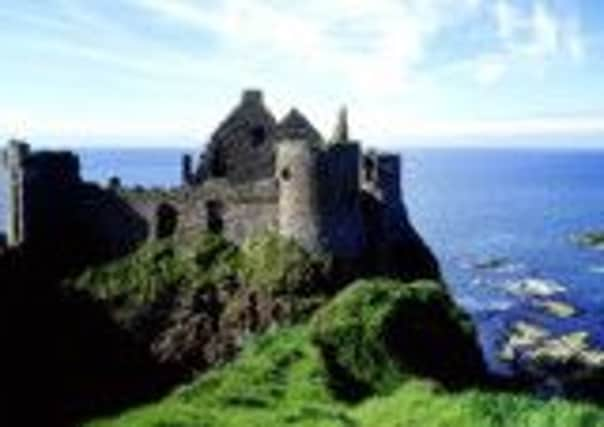15th centurysettlement at Dunluce


It was situated in the fields around Dunluce Castle.
A recent dig, undertaken by DOE’s Northern Ireland Environment Agency (NIEA), to reveal more of the lost 17th century town of Dunluce uncovered exciting new evidence of an earlier settlement, dating back to the late 15th or 16th century.
Environment Minister Mark H Durkan said: “This is a tremendously exciting historical development. Traces of buildings were unearthed close to the cliffs upon which the castle was built. These buildings most likely formed a small settlement, just outside the original castle gate. They pre-date the later expansion of the castle complex and development of 17th century Dunluce Town. We are extremely lucky to make this exciting discovery. Very few 15th century buildings, other than those built entirely from stone, have survived in Ulster and normally there would be few traces, if any, for archaeologists to investigate.”
Advertisement
Hide AdAdvertisement
Hide AdA further important discovery was made in a field to the east of the castle. “This area was targeted for excavation as it was expected that remains of the 17th century town survived there. The archaeologists found the remains of a stone-built structure that had a doorway at the corner, which is quite different to the 17th century buildings revealed to date. A fireplace in the building has been scientifically dated to the late 15th century. This leads archaeologists to suspect an earlier phase of settlement,” said Mr Durkan.
The radiocarbon date, obtained from a fireplace on the clay floor of the structure, suggests a construction date in the late 15th century, around the time the MacQuillans were building the castle. Pottery that dates from the late medieval period was also recovered from the structure.
The Minister continued: “What we are now beginning to uncover are traces of earlier and extensive late medieval settlement activity which are equally as important as the remains of the 17th century Dunluce Town. This provides an exciting new avenue of research to explore as part of our future investigations at Dunluce.”
Plans are currently in preparation for a major project to reveal the buried remains of the town and the castle gardens to the public with the support of the Heritage Lottery Fund.